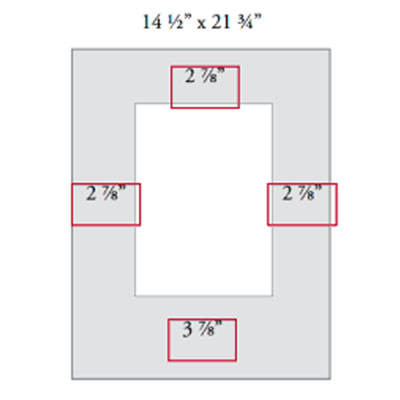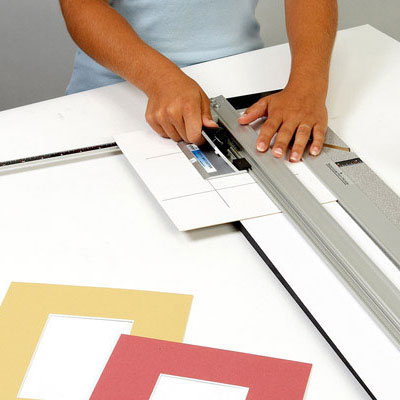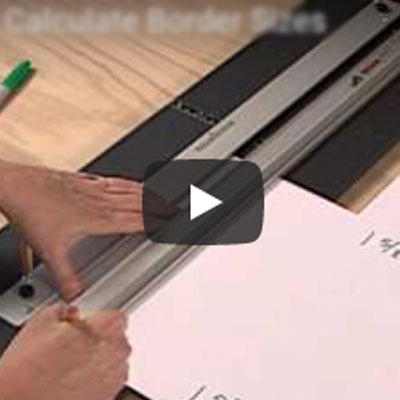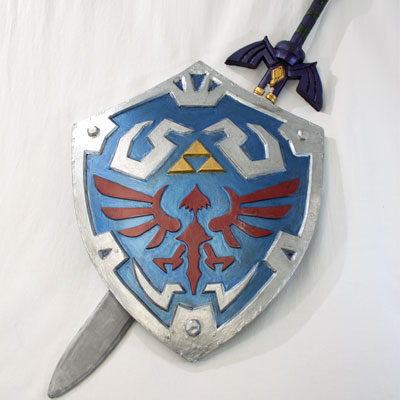DEALING WITH HOOKS AND CURVES IN THE BEVEL EDGE
Another common problem in mat cutting is a beveled edge that is not consistent the entire length of the cut. This occurs because the blade flexes and the result is an edge that shows evidence of bowing, wavering or dipping. To get to the bottom of what causes inconsistency in the angle of the cut, you need to discover what's causing the blade to flex and fix it. There are three general causes of blade flex: First, the mat is not perfectly flat when you cut it; second, something is causing the blade to drag; and third, you may be operating the mat cutter improperly.
To achieve good results in mat cutting, the mat must be flat and firm when you cut it. If the mat is allowed to sag or bow while cutting, the result will be blade flex. First, the mat cutter itself must be on a flat, firm surface. If the table is warped, the entire mat cutter can sag when pressure is applied for cutting.
As a result, the mat can sag away from the blade, the blade rises in the mat and flexes in response to the change in resistance. Second, there must be no obstruction under the mat during cutting. Even something as seemingly minor as paper scrap or a broken piece of pencil lead can cause trouble. If you are replacing the drop-out piece in the window of the mat (as is necessary when you are double matting), make sure it fits flush within the window. If it's ill-fitted to the window, when the two mats are adhered together, the drop-out piece will be an obstruction and cause the mat to bow slightly.
The second major cause of blade flex is a blade that drags while cutting, and one of the most common causes of drag is a blade that's cutting too deeply. The blade should penetrate the mat and just scratch the surface of the backing sheet. If the blade cuts too deeply or all the way through the backing sheet, you are exposing too much blade, putting excess drag on it and inviting blade flex (Figure M‑7). Another common cause of blade drag is a dull blade. As the blade becomes increasingly dull it drags more and more, and as it drags it flexes. If you encounter a sudden rash of inconsistencies in the beveled edge, replace the blade and, if necessary, adjust the depth of the cut.
When operating the mat cutter, avoid rocking the cutting head (Figure M‑8). The cutting head should ride flat on the mat during the entire course of the cut. Also, avoid lateral, or side-to-side, play of the cutting head on the guide rail. Even with a new mat cutter there will be some degree of side-to-side play. Overcome this by using consistent directional pressure down and in throughout the cut (Figure M‑9). It's not difficult to see that rocking or wobbling the cutting head can lead to blade flex, and blade flex in turn can lead to inconsistencies in the beveled edge.
If you can cut a mat with a perfect corner—meaning no evidence of overcuts or undercuts—and one with a clean, sharp beveled edge, and that has a consistent 45-degree edge on its window, you've got a perfect mat. To the extent that good matting is defined by the absence of common problems, being able to recognize and address those problems is a key element of good matting.












